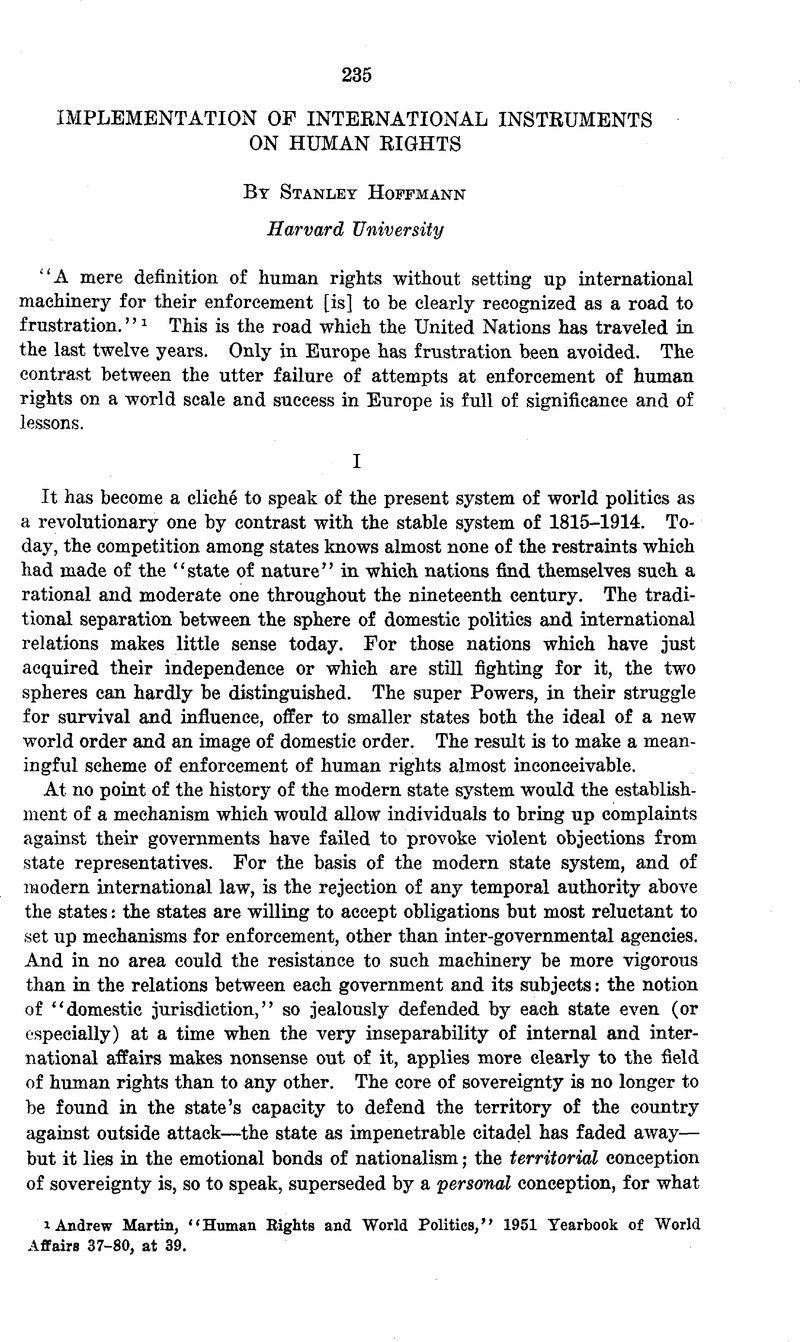Article contents
Implementation of International Instruments on Human Rights
Published online by Cambridge University Press: 27 February 2017
Abstract

- Type
- Fourth Session
- Information
- Proceedings of the American Society of International Law at its annual meeting (1921-1969) , Volume 53 , 1959 , pp. 235 - 245
- Copyright
- Copyright © American Society of International Law 1959
References
1 Andrew Martin, “Human Rights and World Politics,” 1951 Yearbook of World Affairs 37–80, at 39.
2 See, in particular, I. L. Claude, National Minorities 35 ff. (Cambridge, 1955), and Moses Moskowitz, Human Rights and World Order, Ch. IX-XI (New York, 1958).
3 See, in the Carnegie Series of National Studies on International Organization, the coming volume on Australia and the United Nations, by Norman Harper and David Sissons, Ch. IX.
4 Lauterpacht, International Law and Human Rights 376 (London, 1950).
5 See the remarks of Percy Corbett, The Individual and World Society 50–51 (Princeton, 1953), and Heinz Guradze, Der Stand der Menschenrechte im Volkerrecht 158–159 (Göttingen, 1956).
6 See Uruguay and the United Nations 74 ff., and 110, 119 (New York, 1958).
7 Moskowitz, op. cit. 145.
8 J. F. Green in The United Nations and Promotion of the General Welfare 764 (Washington, 1957).
9 See, in particular, Ch. 9 of his book, The Council of Europe (London, 1956).
10 See the Council of Europe News, Oct., 1958, Feb., 1959, March, 1959.
11 A. B. McNulty and M. A. Eissen, “The European Commission of Human Rights: Procedure and Jurisprudence,” Journal of the International Commission of Jurists, Vol. I, No. 2 (Spring-Summer 1958), pp. 198–224.
12 What disturbs me most about the method adopted by Professors Lasswell and McDougal is this: Their policy recommendations often amount to advising us to interpret international law in the way most advantageous to the interests of the West, or of the United States, whose values tend to be assimilated to those of human dignity. See Mr. McDougal's above remarks concerning the U. S. intervention in Lebanon and his analysis of the law of the sea in McDougal and Schlei, “The Hydrogen Bomb Tests in Perspective: Lawful Measures for Security,” 64 Yale Law Journal 648 (1955). Now, I would understand such advice if it were openly couched in the language of socalled “realism”; but when Professor Hans Morgenthau speaks the language of realism, Professor McDougal frowns. See “Law and Power,” 46 A.J.I.L. 102 (1952), and “The Realist Theory in Pyrrhic Victory,” 49 A.J.I.L. 376 (1955). I object to the methodological or sociological disguise of what C. Wright Mills calls the nationalist celebration.
13 On the distinction between identical, convergent and opposed interests, see Ernst B. Haas, “The Challenge of Eegionalism,” 12 Int. Organization 440–458 (1958).
14 Theory and Eeality in Public International Law 328 (Princeton, 1957).
15 For an elaboration of these points, see S. Hoffmann, “International Relations: The Long Eoad to Theory,” 11 World Politics 346–377.
- 1
- Cited by




